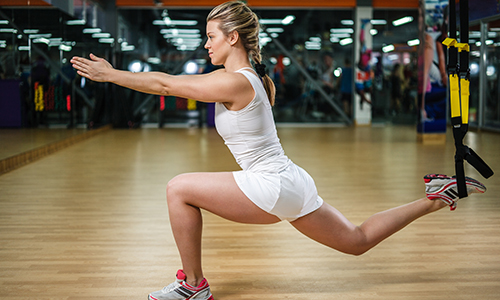4 natural ways to reduce the appearance of cellulite
What is cellulite?
Cellulite is a common skin condition where certain areas of the body appear dimpled or bumpy, somewhat resembling the texture of an orange peel.
This happens when the layer of fat underneath the skin starts to push against connective tissue, causing the skin to pucker or dimple. Cellulite is more noticeable in some people because of factors like genetics, body fat percentage, muscle tone, and age.
Cellulite is incredibly common and generally harmless, but can be a cosmetic and aesthetic concern for some people.
Where is cellulite most common?
The appearance of cellulite is more common in women than men because the structure of the connective tissue is shaped differently.
Cellulite is most common in areas of the body where the most fat tends to accumulate, include:
- Thighs
- Buttocks
- Hips
- Abdomen
- Upper arms
- Lower back
Can you get rid of cellulite?
It's important to remember that cellulite is common and entirely natural, and while the appearance of it can be reduced, it's unlikely to disappear completely.
Regular exercise helps by toning muscles and reducing body fat. Healthy eating with less processed food and more fruits, vegetables, and whole grains also helps. Hydration and good skincare can improve skin elasticity, making cellulite less noticeable.
Keep reading to learn more about how you can natural reduce the appearance of cellulite.
1. Exercise regularly

Exercising regularly will burn calories, therefore fat, and help to tone your body, reducing the appearance of cellulite.
Regular cardiovascular exercise is a great way to burn calories as well as reducing your risk of diabetes and heart disease by keeping your heart working efficiently and effectively.
For people with a good base level of fitness I’d also recommend interval or HIIT (high-intensity interval) training. Interval training involves short bursts of intense work followed by recovery periods.
This method not only burns more calories in a shorter period of time, but also works your heart more effectively and has been proven to reduce body mass and fat mass more successfully than steady-state cardio.
2. Experiment with strength training
Strength training is also a vital tool in helping to reduce the appearance of cellulite. Strength training increases muscle mass and given that muscle burns more calories than fat, this increases your basal metabolic rate (meaning your body burns more calories at rest). Gaining muscle mass is also the key to achieving a more ‘toned’ look which lessens the appearance of cellulite.
Resistance training and strength training can be intimidating for some people. Thankfully, the idea of having to pound heavy weights whilst you're covered in sweat couldn't be further from reality.
Resistance training is beneficial and accessible for almost everyone. If you're interested in learning more or getting started as a complete beginner, click either of the articles below:
- Everything you need to know about resistance training before you get started
- Resistance training workout for beginners
- Busting resistance training myths
3. Balance your diet
Having a balanced and healthy diet helps to prevent your body from storing excess fat. Make sure to incorporate wholegrains, lean sources of protein, such as chicken, beans and fish, as well as a variety of fruits and vegetables into your diet.
Aim to have a ‘plate full of colour’. These foods provide your body with all the micronutrients it needs, keeping you fuller for longer, as well as being rich in anti-oxidants, which break down the fat cells in cellulite.
Looking for more information on diet and nutrition? Click here to learn more
4. Drink plenty of water
Drinking plenty of water throughout the day helps your body to flush out toxins and rid itself of excess fat. Water also strengthens your body’s production of collagen, which helps skin cells regenerate and allows skin to appear supple and smooth.
How much water should we drink?
Broad recommendations suggest we should all aim to drink between 6 to 8 glasses (2 liters) of water per day, but individual needs and circumstances will cause this number to vary from person to person.
Factors like age, body composition, activity level, and climate all influence how much we need to drink, so it's best to find the right amount for you and your body using trial and error.
Last updated Wednesday 1 May 2024
First published on Tuesday 5 April 2016

